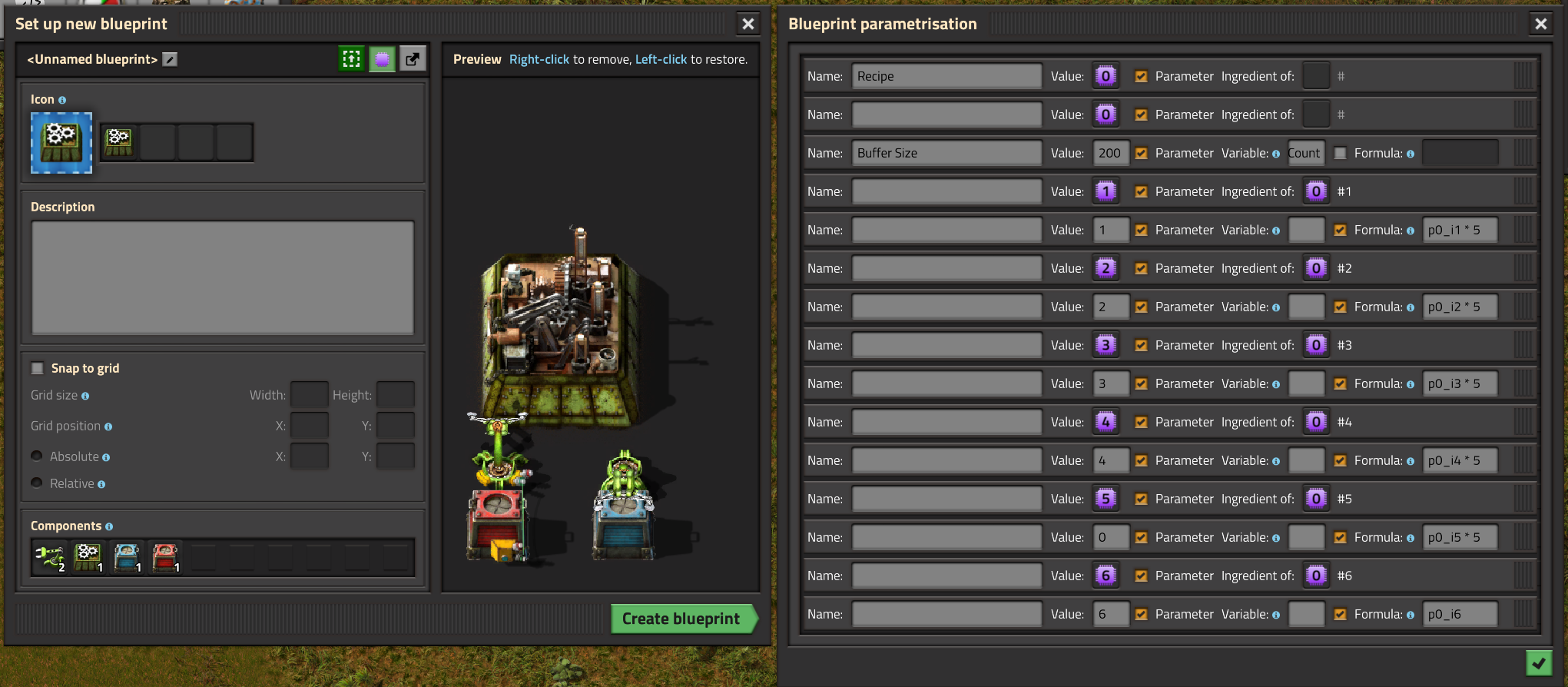Using a fixed lock count, as you mentioned, is possible, and is perfectly viable once you have very large amounts of resources available, or for things that you will always want available in bulk.
The reason for my request is two fold.
When you do not yet have large amounts of resources available, but have started using bots extensively, somewhere around the late starter base, there are recipes that are very expensive and that you need very little of, but are also best built using bots, such as rocket silos, personal reactors, personal battery mark 2s, or power armour itself.
For those recipes, and especially at that stage of the game, making ten stacks of them can be a large resource investment that you're not yet wanting to make.
Technically, limiting the output to a fixed amount, or stack count, with an inserter is trivially easy, however, it adds a non-zero performance hit that can be noticable for very large bases or multiplayer games. Using locked slots is better in this case, but does not have feature parity with the circuit condition. The prior can be automated as part of parameterisation, while the latter cannot.
As for how I forsee it working, let's use a simple two chest bot assembler setup as an example, such as the one in this image:

- Capture.PNG (614.31 KiB) Viewed 883 times
Instead of linking the inserter to the output chest and having it disable itself when the desired output amount is reached, you would lock 1 slot in the output chest.
When setting up the parameters, assuming that the recipe is parameter 0, and the number you wish to store is a variable called Count, you could use a formaula to calculate automatically how many slots need to be locked. That would be `48 - (Count / p0_s)`, rounded up.
Alternatively, if your blueprint requests the stack count rather than the specific number, it would just be `48 - StackCount`.
Whichever way you run the calculation, the result is a number of slots to lock that leaves the chest with a number of unlocked slots equal to number of slots required to hold that number of item stacks.
if your blueprint contained multiple chests with 1 locked slot, the parameter would effect both chest. If it also had two chests with two locked slot each, then those chests' locked slot counts would be a single parameter between eachother, but would be distinct from the parameter for the chests with a single locked slot.
Visually, each chest with a unique number of locked slots would show up as new line in the parameterization window with an intial value of 1, or 2, or whatever.
Alternatively to the value being the number of locked slots, it could be flipped so that it is the number of unlocked slots that is counted and modified, making it robust against chests of different sizes being effected by the same parameter. That would also simplify the equations to just `Count / p0_s`, or `stackCount` respectively.
I Hope that I've managed to answer your question somewhere in there.